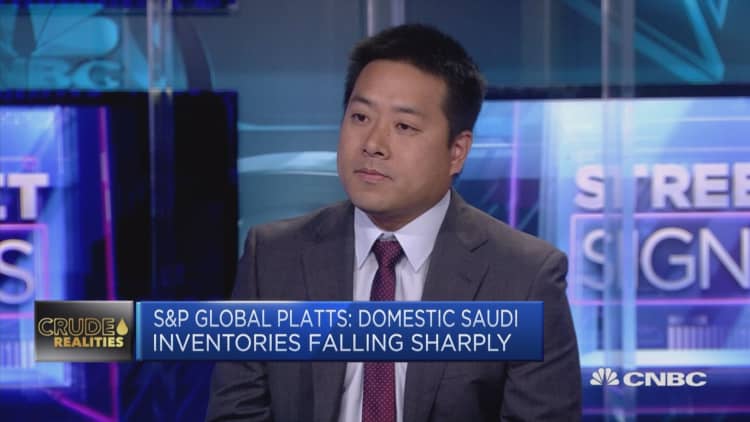
OPEC producers and President Donald Trump are both embracing a "show me" attitude to energy market uncertainty, analysts told CNBC on Friday, as traders speculate about the possibility of $100 a barrel before year-end.
"The market and certainly the U.S. president is saying to OPEC and Saudi Arabia: 'Show me the barrels,'" Herman Wang, OPEC specialist at S&P Global Platts, told CNBC's "Street Signs" on Friday.
"And Saudi Arabia and OPEC have kind of turned around and said: 'Well, show me the demand,'" he added.
Earlier this week, Trump urged OPEC to ramp up production levels to prevent further price rises ahead of the mid-term elections in November.
Trump's calls for the Middle-East dominated cartel to raise global production levels comes as the U.S. prepares to impose targeted crude sanctions against Iran in around five weeks' time. Further to this, Washington is also asking buyers of Iranian oil to slash imports to zero to force Tehran to negotiate a new nuclear agreement.
OPEC and non-OPEC producers were initially expected to be reluctant to immediately respond to heightened pressure from the Trump administration, but Saudi Arabia is now expected to quietly add additional barrels of oil to the market over the next couple of months.
Spare capacity is the 'big question right now'
When asked whether OPEC and non-OPEC producers were likely to have the capacity to ramp up production levels in order to offset any potential supply disruptions, Wang replied: "That is the big question in the market right now."
Saudi Arabia has claimed to have around 1.5 million barrels per day (bpd) that they can add to the market if required.
Yet, external observers warn Riyadh's claim has never been tested before and even if the kingdom was able to significantly ramp up production, the OPEC kingpin could then be in a weaker position to offset any further other disruptions in the market.
U.S. sanctions against Tehran are widely expected to have an immediate impact on Iran's oil exports, although the estimates of exactly how much of the country's oil could disappear from November 4 vary widely.
Some energy market analysts expect around 500,000 bpd to disappear once U.S. sanctions against Iran come into force, while others have warned as much as 2 million bpd could come offline over the coming months.
At its 2018 peak earlier this summer, Iran exported around 2.7 million bpd of crude oil — that's the equivalent to almost 3 percent of daily global consumption.
Sources confirmed to CNBC on Thursday that Riyadh stands ready to put as much as 550,000 additional bpd onto the market over the next eight weeks.
This increased crude supply would be reliant on demand, OPEC insiders told CNBC, although if market demand is apparent, supply would grow accordingly.
'Talk of $100 a barrel is rife'
"Even against this backdrop of a firmer dollar and potential demand destruction, talk of $100 a barrel is rife," Stephen Brennock, oil analyst at PVM Oil Associates, said in a research note published Friday.
"While we see such predictions as premature, one thing is clear: the ascent in oil prices shows few signs of capitulating," he added.
International benchmark Brent crude traded at around $82.03 on Friday, up around 0.38 percent, while U.S. West Texas Intermediate (WTI) stood unchanged at around $72.13.
Looking into 2019, S&P Global Platt's Wang said OPEC producers were apparently reluctant to "open the floodgates" now because global oil demand is expected to be weaker next year.
OPEC forecasts that non-OPEC rivals, led by the U.S., would raise output by around 2.4 million barrels per day in 2016, while global oil demand would grow by just 1.5 million bpd.



